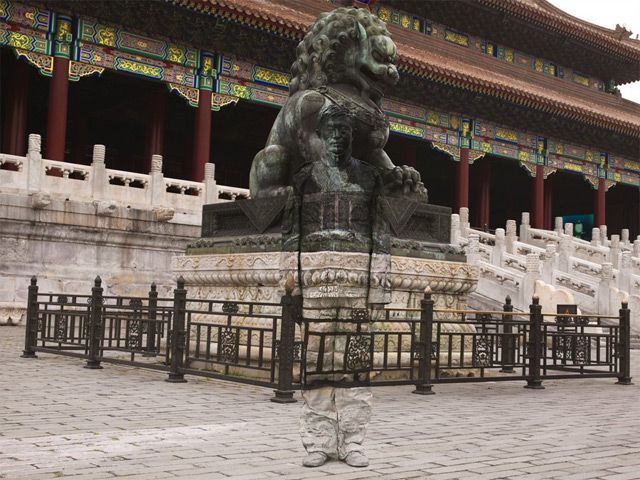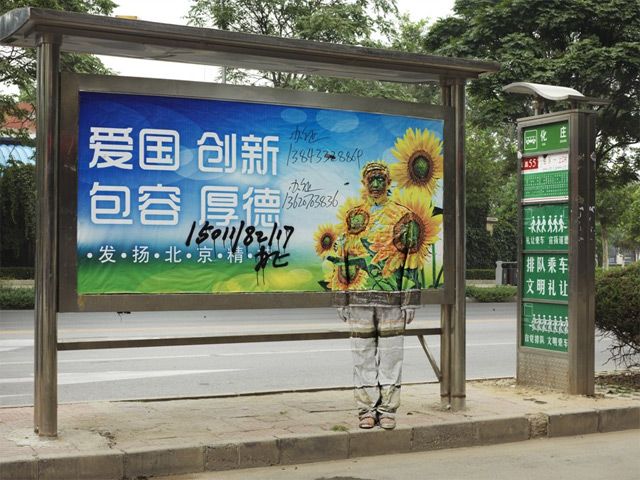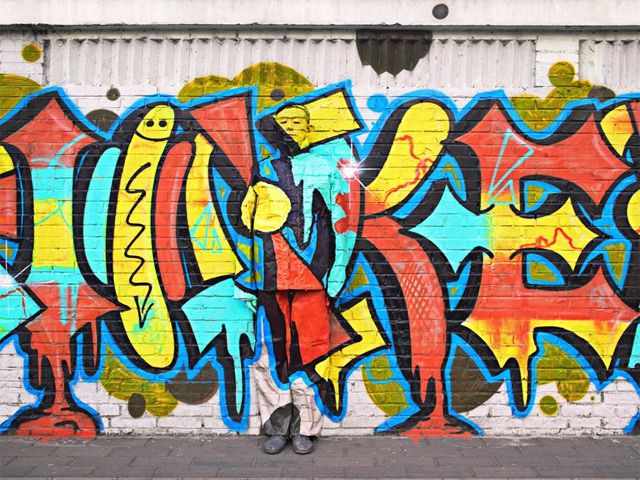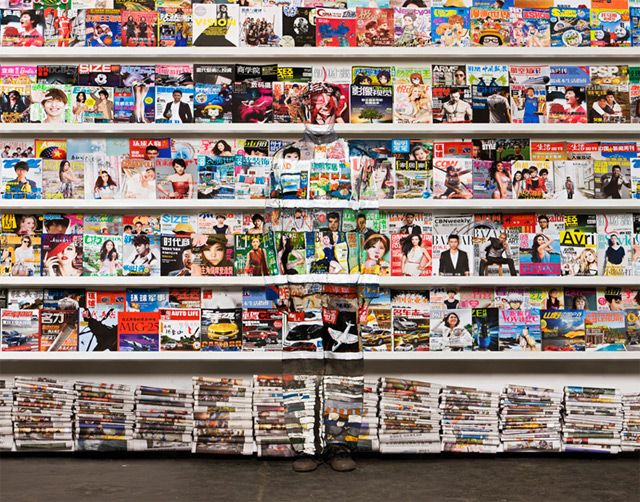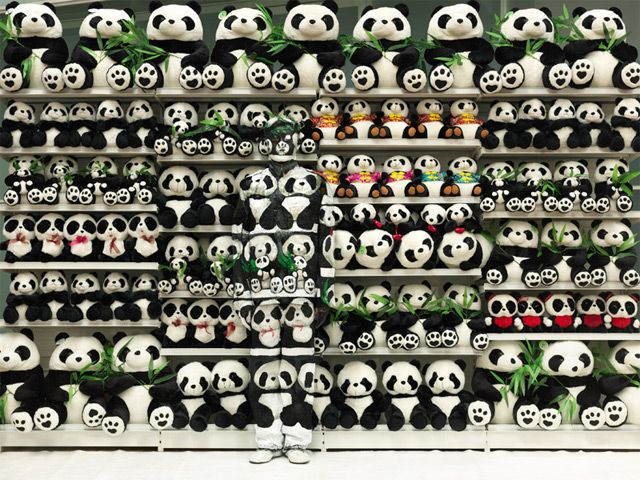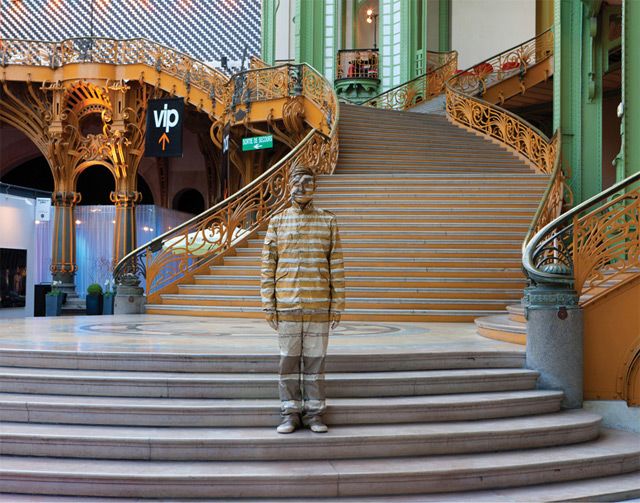Colossal reports that the Galerie Paris-Beijing has a new exhibition displaying the latest photo series by artist Liu Bolin, whose nickname came to be “The Invisible Man” after his first body of work in 2005 called “Urban Camouflage” when Bolin photographed himself as blending into his surroundings using body-paint. The new photo series, called “Hide in the City” uses the same methods and mediums to express Bolin’s ideas on the current human condition. His approach is not merely to show how an individual disappears into his surrounding environment, but how the environment seizes the individual and imposes change upon him through economic and urban development.
Galerie Paris-Beijing describes the creative process:
Helped by his assistants, he stands still for hours in a landscape while they are painting on him to create a camouflage. This action of vanishing generates a tragic and difficult dialogue between the subject and his environment.
The process is meticulous, no doubt, demanding Bolin to stand painstakingly still for long periods of time in order for the painting team to adjust details and mask the artist’s appearance. The method itself may be seen as a physical metaphor for Bolin’s ideas behind his work as the paint causes him to become integrated into the background until he seemingly disappears. But disappearing into the environment–an act of the individual–is not what Bolin wishes to emphasize. He explains, “My intention was not to disappear in the environment but instead to let the environment take possession of me.”
In an article at ArtPulse Magazine in 2008, Janet Batet writes of Bolin:
His proposal comes from the process of change and liberalization that contemporary Chinese society has been experiencing. It is a traumatic change that imposes a bipolar culture in which tradition and foreign influence, the old and the new, are in conflict with each other, seeking new horizons. Trapped in the midst of this process, the individual appears disoriented, displaced, skeptical, and he develops the most subtle of survival mechanisms. The environment, far from being stable, is ever changing, creating a kind of chameleon-like individual always willing to adapt to new decor.
In observing the photographs, it is difficult to believe that digital drawing was not involved in the process and that the finished product was done entirely by manual painting. Bolin’s ties to the ancient tradition signify yet another example of his ideas on the disoriented individual, wedged between the old and the new, attempting to balance the grasp of traditions amid an abruptly changing landscape that only continues to morph over time. The series is disquieting, but nonetheless speaks truths to the issues felt by the vast majority. How then does one sift through such troubled confusion? Bolin’s artwork suggests that individuals should examine the circumstances being imposed upon their lives and consciously preserve the conventions and cultures that give them identity, rather than submitting to forced customs devolving from a rapidly changing environment.

